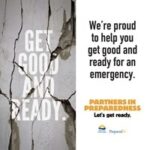Aftershocks, Part 1: How to Stay Safe
In light of the recent earthquakes in Nepal, we want to talk a little about the ins and outs of survival, once you’ve safely made it through the initial quake. Our hearts and thoughts go out to those who are dealing with the disaster in Nepal right now — those who have been killed, injured, lost loved ones, and those who are still dealing with ongoing trauma.
In earthquake prone areas, such as British Columbia where threat of “the big one” lingers, it’s really important to understand how vulnerable your environment is following a serious earthquake. Aftershocks are often more dangerous than the original earthquake because buildings and structures that are still standing are damaged and still vulnerable to falling.
Take some time to learn, based on knowledge grown through experience, the best practices to follow in the days after an earthquake. The following are a few tips to follow if you’re in a city that has just experienced a quake.
- Stay alert, and don’t underestimate the power of aftershocks.
- The rule of thumb, according to trained and experienced Search and Rescue workers, is to keep away from buildings by a distance of about double their height. That’s how far falling debris can reach, if they crumble.
- Proceed cautiously, avoiding roads, bridges or ramps that may have been damaged by the earthquake.
- Proceed slowly to a previously designated meeting place, to find your family and loved ones.
For more information on how to respond to earthquakes, take a look at British Columbia government’s Earthquake Response Plan as an example. Take note of the assumptions this plan makes regarding your responsibility:
Individual Responsibility – British Columbia residents should know what to do in an earthquake to protect themselves and their families. All families in earthquake prone areas of the province should have emergency kits, family reunification plans, and the ability to sustain themselves for a period of time until help is available.
So, paired with the importance of knowing the dangers of aftershocks, is the importance of having supplies available to be self-sufficient until your community can be up and running again. We at Total Prepare highly recommend long term emergency food and water as well as survival supplies that will help you do what’s called, shelter-in-place.
If you’d like to read some of the other posts on our blog, try these:






